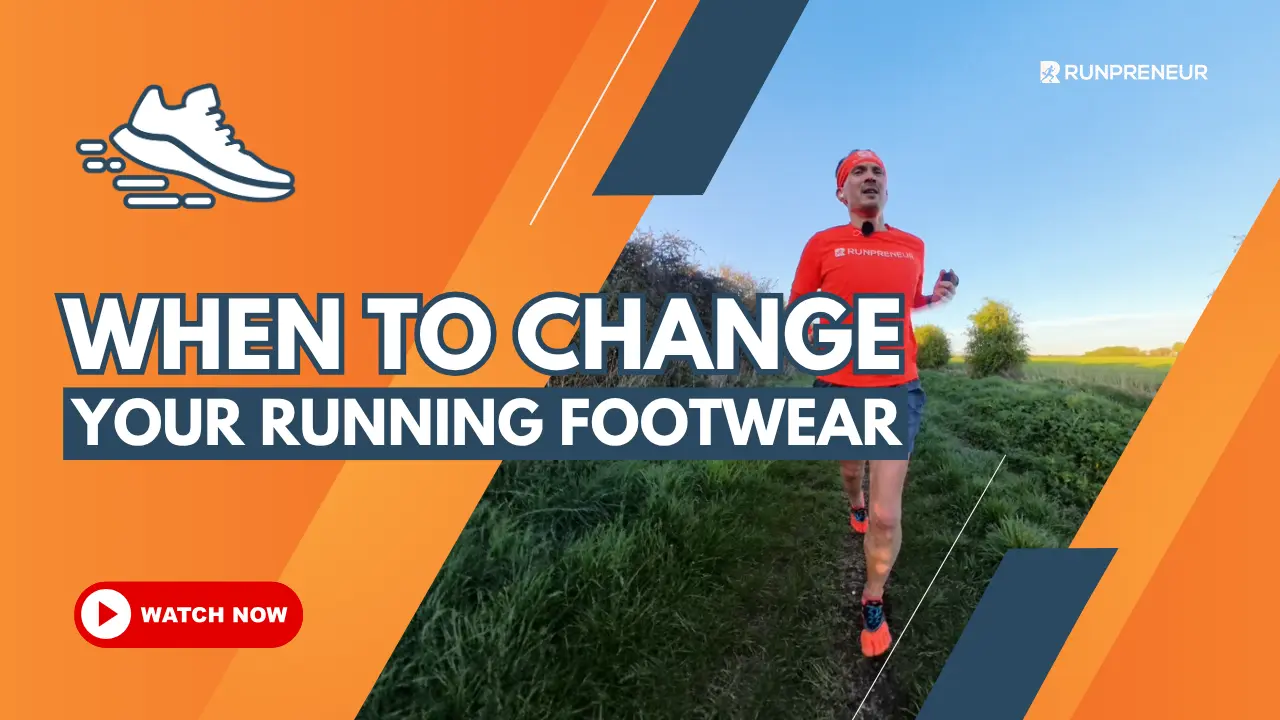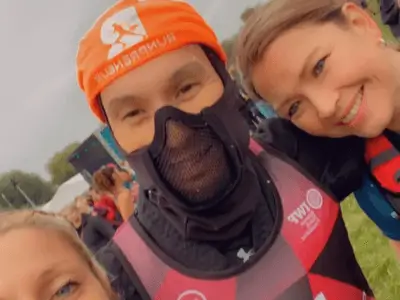Runpreneur Journey Blog
Embark on an extraordinary journey with the Runpreneur community. Discover inspiring stories, insider tips, and the transformative power of our global challenge. From first-time runners to seasoned athletes, our blog captures the essence of the Runpreneur movement, inspiring others to join the cause.

Are Your Running Shoes Failing You? Here’s the Secret to Injury-Free Miles 🚨👟
Are Your Running Shoes Failing You? Here’s the Secret to Injury-Free Miles 🚨👟
Have you ever wondered if those trusty old running shoes of yours are secretly sabotaging your progress? Or worse—pushing you closer to injury? As someone who’s been pounding the pavement (and trails!) for nearly 5 YEARS STRAIGHT on my epic journey to run 40,075km in the name of saving children’s lives, let me tell you: knowing WHEN to change your running footwear could be the difference between crossing the finish line strong and limping home in regret.
Let’s dig into my hard-earned insights as I check off another consecutive run on my mission to raise £1,000,000 for children’s causes around the world. Trust me, after almost 1,800 days of back-to-back run vlogging barefoot style! I’ve learnt more than a thing or two about when it’s time to retire those runners.
Why Timing Your Shoe Swap MATTERS (A Lot)
I get it. We runners can get weirdly attached to our shoes. They become loyal companions on all those early mornings and late-night grinds. But sticking with the same pair for too long is a silent saboteur. When running footwear wears out, it doesn’t just lose comfort—it loses the ability to protect you.
And for me, on this monster challenge to reach DAY 4,292 of consecutive running and rack up over 40,075km (that’s a lap of the world!), every inch of foot care matters. Especially when every penny I raise helps save another child’s life.
The 3 (Real) Ways I Know It’s Time to Change Running Shoes
By the MONTHS:
If you’re clocking up consistent miles (think 2–4 times a week or more), most running shoes will last you six to nine months—tops! My barefoot-style footwear (Vibram Five Fingers, in case you’re wondering) sometimes stretch to the upper end, but not forever. Mark your calendars, people!By the FEEL:
Remember how your shoes felt brand new? Like a slipper—supportive, cloud-like, ready to take on the world? Yeah. If pulling them on now feels nothing like that and more like a grind, it’s a clear sign. Discomfort, little niggles, or just that sense the magic’s gone? Don’t ignore it.By the SOLE:
This is my game-changing hack. Flip those shoes over. Check the tread. If the grip is worn down or worse—the tread’s totally gone—it’s time for a change. (And as a bonus: studying the wear pattern also clues you in on your running form. I can even predict where I’ll get blisters during marathons just by looking at sole damage!)
Pro Tip for Endurance Runners: Plan Your Change Wisely
If you’ve got a marathon or ultra coming up, switch your shoes a couple of weeks before the event to allow enough time to break them in, but also to make sure you’ve got the structure and support you’ll need—not just for your feet, but for your entire body.
Don’t risk last-minute pain, injury, or a “did-not-finish” because you got nostalgic about those worn-outs. Fresh shoes can make or break your race, and on my journey, it’s a lesson I live by.
Interactive Time! What’s Your Shoe Lifespan?
How often do YOU change your running footwear? Drop a comment with the mileage, months, or tell me your favourite shoe story below. Have you ever waited too long and paid the price? Let’s swap tips and keep our community injury-free and running strong!
Join My Mission—Beyond the Miles
If you believe in running for a bigger cause, I’d love for you to join the journey. Every share, comment, like, and subscribe gets my mission seen by more people, raises more funds, and in real terms—saves more children’s lives.
🚀 Let’s make DAY 4,292 a reality. Let’s lap the world. Let’s raise £1,000,000.
Stay positive, stay happy, and (most of all) stay injury-free.
See you on tomorrow’s run!

Kevin's 40,075km Challenge: Raising £1 Million for Children
Meet Kevin, a dedicated Runpreneur who embarked on an extraordinary journey to raise £1 million for children in need. Over the course of his 40,075km challenge, Kevin's unwavering determination and passion inspired thousands to join the Runpreneur movement.

Runpreneur Vlogging: Capturing Kevin's Journey
Experience the Runpreneur challenge through the lens of Kevin's video diary. Witness his ups and downs, the camaraderie of the community, and the transformative power of running for a cause. Dive into the visual stories that capture the essence of the Runpreneur movement.

Empowering Children, One Step at a Time
As Kevin logged every kilometre of his 40,075km challenge, the true purpose behind his journey came into focus. Each step, each bead of sweat, fuelled essential healthcare, education, and nutrition programs for children in need around the world.

The Transformative 4x4x48 Challenge
Experience the thrill and personal growth of our iconic 48-hour running event. Witness the determination and resilience of Runpreneurs as they push their limits, one mile at a time.

Runpreneur Vlogging: Capturing the Journey
Dive into the visual stories of our Runpreneurs as they document their experiences through engaging video logs. Witness the challenges, triumphs, and moments of camaraderie that define the Runpreneur spirit.





















